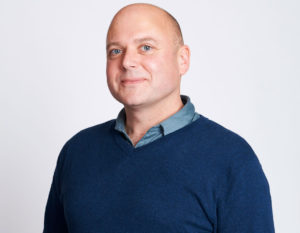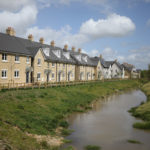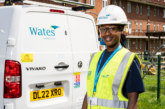 Duncan Brown, Chief Finance Officer at VIVID, one of the largest providers of affordable housing in the South of England, discusses how sustainable action in the housing sector must be balanced with the impact on residents.
Duncan Brown, Chief Finance Officer at VIVID, one of the largest providers of affordable housing in the South of England, discusses how sustainable action in the housing sector must be balanced with the impact on residents.
The theme for Earth Day 2022 is #InvestInOurPlanet. It’s a powerful message about climate change and it’s especially poignant for the housing sector.
In the UK, housing is responsible for nearly 20% of all Co2 emissions — about 55m tonnes — mostly from heating our homes. So, it’s obvious — the more efficiently we heat our homes, the more we’ll reduce our emissions. That’s what we’ve been referring to as our fabric first approach.
Housing associations are already investing huge amounts in building homes to higher standards and retrofitting existing homes. At VIVID we’ll invest £700m over the next 30 years. I thought that was a big number until I read that the estimated cost of retrofitting all social housing is £104bn.
In some ways it’s an exciting time — trying out new technologies and introducing different construction methods. We just have to be careful not to forget the people living in our homes. So, I’m suggesting we ditch the fabric first approach and replace it with a customer first approach.
Here’s three reasons why we’re not going to hit our energy efficiency targets without help from our customers:
The affordability crisis
We’re all feeling the impact of the cost-of-living crisis. But for some residents in social housing, it’s not just a crisis, it’s an emergency. For people who spend all their income on essentials, prices are rising faster than the inflation data really shows. And energy costs are rising fastest.
Understandably then, when we talk to customers about changes to their home, the first question is ‘what will happen to my heating bills?’ The answer used to be a difficult one. Heat pumps are great for the environment but unless your home is really well-insulated, your costs could rise sharply. That’s why VIVID’s approach to sustainability is based on making our homes more affordable. Of course, we want to reduce the greenhouse gas emissions from our homes, but we’re trying to help our customers reduce their energy bills too.
Lifestyle changes
Most of us are used to almost instant heat when we turn a dial, but living in a modern eco home is different. It’s a lifestyle change and we can’t just impose that change on our customers. Explaining how it’ll reduce energy bills helps but only when it’s combined with clear information.
I’ve seen some great examples of this, including how modern, well-insulated homes are better at overcoming poor ventilation and damp — a very hot topic for housing associations right now.
Resource allocation decisions
Housing associations, like any business, face some stark choices about how they allocate their resources among competing priorities. There’s still a housing crisis caused by a shortage of homes of all tenures. There’s cost inflation, pressure to raise service standards. I could go on.
Many housing associations are finding they can’t do all these things. Others are struggling to find the right balance. There isn’t a right answer but at VIVID we make these decisions with our customers, putting them first, not the fabric.
VIVID’s North Stoneham Park housing scheme in Eastleigh.









